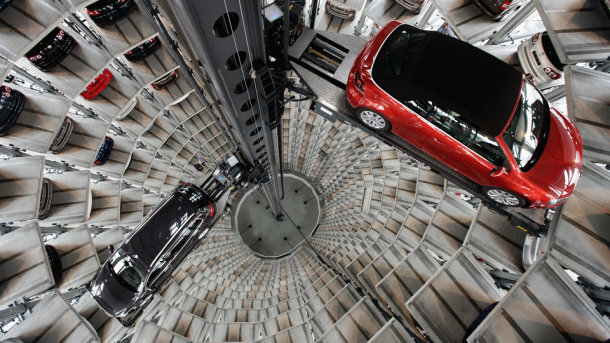Algae may be secret weapon in climate change war
by Ruth Morris
Thu Oct 22, 2009
MIAMI (AFP) – Driven by fluctuations in oil prices, and seduced by the prospect of easing climate change, experts are ramping up efforts to squeeze fuel out of a promising new organism: pond scum.
As it turns out, algae -- slimy, fast-growing and full of fat -- is gaining ground as a potential renewable energy source.
Experts say it is intriguing for its ability to gobble up carbon dioxide, a greenhouse gas, while living happily in places that aren't needed for food crops.
Algae likes mosquito-infested swamps, for example, filthy pools, and even waste water. And while no one has found a way to mass produce cheap fuel from algae yet, the race is on.
University labs and start-up companies across the country are getting involved. Over the summer, the first mega-corporation joined in, when ExxonMobil said it would sink 600 million dollars into algae research in a partnership with a California biotechnology company.
If the research pans out, scientists say they will eventually find a cost-effective way to convert lipids from algae ponds into fuel, then pump it into cars, trucks and jets.
"I think it's very realistic. I don't think it's going to take 20 years. It's going to take a few years," said chemical engineer George Philippidis, director of applied research at Florida International University in Miami.
One of the factors fueling enthusiasm is algae's big appetite for carbon dioxide -- a by-product of burning fossil fuels.
"We could hook up to the exhaust of polluting industries," Philippidis said. "We could capture it and feed it to algae and prevent that CO2 from contributing to further climate change."
California company Sapphire Energy has already fueled a cross-country road trip with algae-tinged gasoline.
The trip, meant to raise awareness, prompted the headline, "Coast to Coast on Slime". Another California company is looking at fattening fish on algae and then processing the fish for oil.
"Where algae is very nice is, it's prolific. It's everywhere... and you don't have to do much. Mother Nature has kind of figured it out," said Roy Swiger, a molecular geneticist and director of the Florida division of the non-profit Midwest Research Institute.
MRI began studying algae as an energy source three years ago. Swiger warned that algal fuels are not ready for prime time yet. Even though algae grows like gangbusters, it currently costs up to 100 dollars to make a gallon of algal fuel-- hardly a savings.
The rub is bringing cost down, and production up. To do this, scientists must find cheap ways to dry algae and extract the lipids, where energy is stored.
Swiger noted that it would not make sense to spend five dollars of electricity to run a centrifuge to dry out algae, that in turn would only produce one dollar of fuel.
If research goes well, Swiger thinks it will take five years to bring down production costs to 40 dollars per gallon.
But taking even a tiny chunk out of the energy market -- ethanol has eked out a 4.0 percent share, for example -- can shift the energy mix.
"Four percent is not a lot, and yet everywhere you look there's a pump," Swiger said. "So four percent of a gigantic number is a lot."
Some start-ups are more optimistic. Paul Woods, chief executive of Florida-based Algenol Biofuels, says his company will beat others to market.
He has patented a technology for "sweating" ethanol from algae, without drying it first.
"We see ourselves as a very cheap way to supplement (energy supply)," said Woods, "and the more cheap ethanol we have, the more we're winning in efforts to have independence from foreign fuel."
Woods announced a partnership with Dow Chemical in July to build a demonstration plant, and expects to launch commercial production by 2011.
Experts don't see algal fuel replacing fossil fuels completely, and some have become leery of hype.
The idea of harnessing algae for fuel has been around for decades, they say. Still, no one has been able to make it financially feasible.
"Any fantastic claims will eventually discredit the field if given much credence," said algae expert John Benemann.
Instead, he sees algae as a good source for animal feeds, chemicals and fertilizer.
Back at FIU, Philippidis agreed "there is no silver bullet" to reduce dependency on fossil fuels.
But he saw promise on the horizon, especially as larger companies become involved in algae research. "We are still at an early stage... but as we scale up (production) I think costs will come down very, very quickly," he said.
And if that works, he added, "there is a small Greek island I would like to buy."




